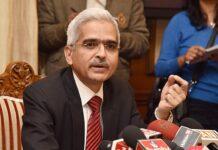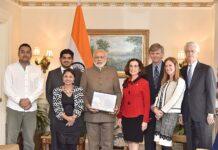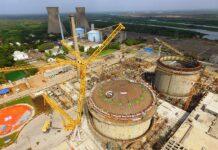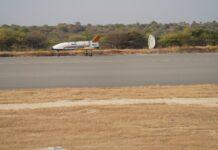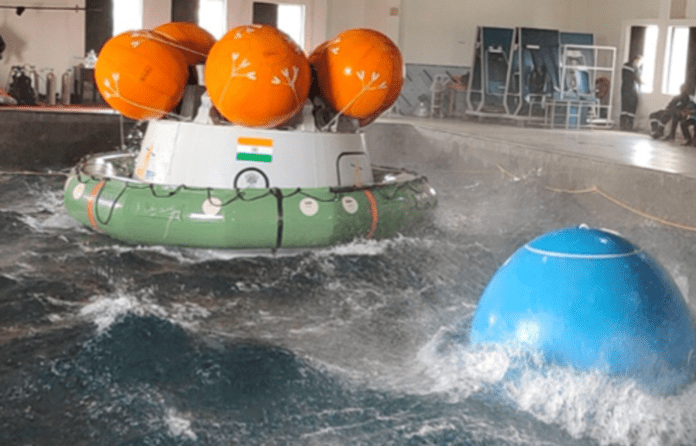
Gaganyaan project envisages launching a crew of three members to an orbit of 400 km for a 3 days mission and bringing them back safely to earth by landing in Indian sea waters. The mission will demonstrate human spaceflight capability to Low Earth Orbit and safe return. ISRO is developing indigenous technologies for Human rated launch vehicle, Habitable Crew Module, Life Support System, Crew Escape System, Ground Station Network, Crew Training and Recovery. These technologies are crucial for meeting the objectives of Gaganyaan mission and for taking up interplanetary missions in future. A budget of Rs. 9023 Crore is allocated towards achieving the objectives of Gaganyaan mission.
Human Space Flight Centre (HSFC), the lead Centre for Human space flight activities inaugurated on 30th January 2019 at ISRO Headquarter campus in Bengaluru, is responsible for implementation of GAGANYAAN Project. This involves end-to-end mission planning, development of Engineering systems for crew survival in space, crew selection and training and pursuing activities for sustained human space flight missions. HSFC takes support from other ISRO Centres to implement the first development flight of GAGANYAAN under Human Space Flight Programme. The primary mandate of this centre is to spearhead ISRO’s Gaganyaan programme through co-ordinated efforts and focus all the activities that are carried out in other ISRO centres, research labs in India, Indian academia and Industries towards accomplishing the mission. HSFC conforms to high standards of reliability and human safety in undertaking R&D activities in new technology areas, such as life support systems, Human Factors Engineering, Bioastronautics, Crew training and Human rating & certification. These areas would constitute important components for future sustained human space flight activities like rendezvous and docking, space station building and interplanetary collaborative manned missions to Moon/Mars and near-earth asteroids.
The project is accomplished through an optimal strategy by considering inhouse expertise, experience of Indian industry, intellectual capabilities of Indian academia & research institutions along with cutting edge technologies available with international agencies. The pre-requisites for Gaganyaan mission include development of many critical technologies including human rated launch vehicle for carrying crew safely to space, Life Support System to provide an earth like environment to crew in space, crew emergency escape provision and evolving crew management aspects for training, recovery and rehabilitation of crew.
Various precursor missions are planned for demonstrating the Technology Preparedness Levels before carrying out the actual Human Space Flight mission. These demonstrator missions include Integrated Air Drop Test (IADT), Pad Abort Test (PAT) and Test Vehicle (TV) flights. Safety and reliability of all systems will be proven in unmanned missions preceding manned mission.
Human rated LVM3 (HLVM3): LVM3 rocket, the well proven and reliable heavy lift launcher of ISRO, is identified as the launch vehicle for Gaganyaan mission. It consists of solid stage, liquid stage and cryogenic stage. All systems in LVM3 launch vehicle are re-configured to meet human rating requirements and named Human rated LVM3. HLVM3 will be capable of launching the Orbital Module to an intended Low Earth Orbit of 400 km. HLVM3 consists of Crew Escape System (CES) powered by a set of quick acting, high burn rate solid motors which ensures that Crew Module along with crew is taken to a safe distance in case of any emergency at launch pad or during ascent phase.
Orbital Module (OM) will orbit Earth and is equipped with state-of-the-art avionics systems with adequate redundancy considering human safety. It comprises two modules: Crew Module (CM) and Service Module (SM). CM is the habitable space with Earth-like environment in the space for the crew. It is of double walled construction consisting of pressurized metallic inner structure and unpressurised external structure with a thermal protection system (TPS). It houses the crew interfaces, human centric products, life support system, avionics and deceleration systems. It is also designed for re-entry to ensure safety of the crew during descent till touchdown. SM will be used for providing necessary support to CM while in orbit. It is an unpressurized structure containing thermal system, propulsion system, power systems, avionics systems and deployment mechanisms.
Human safety is of paramount importance in Gaganyaan mission. Therefore, new technologies comprising of engineering systems and human centric systems are being developed and realised.
Astronaut Training Facility in Bengaluru imparts classroom training, physical fitness training, simulator training and flight suit training to the crew. Training modules cover academic courses, Gaganyaan flight systems, micro-gravity familiarization through parabolic flights, aero-medical training, recovery and survival training, mastering of flight procedures and training simulators. Aero medical training, periodical flying practice and Yoga are also included crew training.
***








